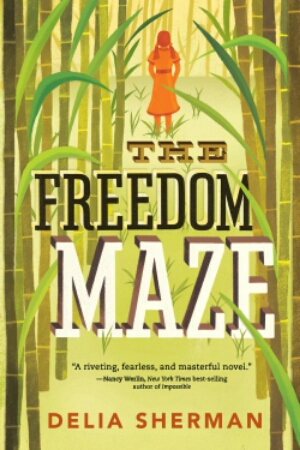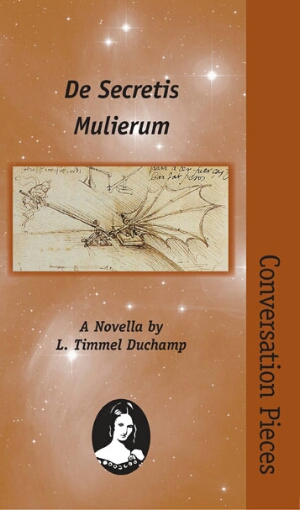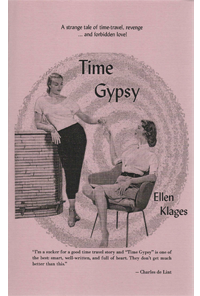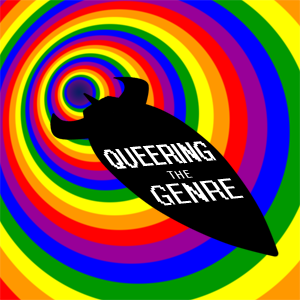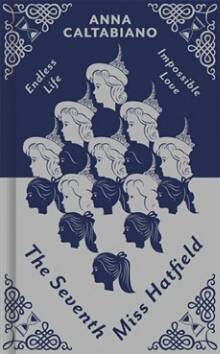Home » Posts tagged 'time travel'
Tag Archives: time travel
Kindred by Octavia E. Butler

On her 26th birthday, Dana and her husband are moving into their apartment when she starts to feel dizzy. She falls to her knees, nauseous. Then the world falls away.
She finds herself at the edge of a green wood by a vast river. A child is screaming. Wading into the water, she pulls him to safety, only to find herself face to face with a very old looking rifle, in the hands of the boy’s father. She’s terrified. The next thing she knows she’s back in her apartment, soaking wet. It’s the most terrifying experience of her life … until it happens again.
The longer Dana spends in 19th century Maryland – a very dangerous place for a black woman – the more aware she is that her life might be over before it’s even begun.
~~~~~
I’ve had this classic of African American genre fiction on my shelves for a long time, and was finally prompted to read it by the release of a graphic novel which spins off the work – asking Nnedi Okorafor if I should read the book or the comic first, the definitive answer was the book, so I have! (Thursday’s review will be of the comic).
Kindred is one of those books that I, arguably, should not be reviewing, and should just be describing. It’s about experiences essentially foreign to me, not because of fictionality, but because of reality; I am spared much of what happens in the novel not because it is fictional, but because I have privilege – white privilege, often perceived male privilege, and the luck to be born in 1989, not 1789. On the other hand, Butler’s intent in the novel seems to be as much about making immediate and personal the impact of slavery for the modern white reader as anything else, so I might be the perfect reviewer.
On that score, Kindred is brutally brilliant. It drops us, with our 20th century understanding of how the world works (1976, so things have changed even since then), repeatedly back into the world of the antebellum Southern States; Dana, our narrator, has to adjust to the survival strategies of a black slave in 1819, instead of the survival strategies a middle-class black woman married to a white man needs. Butler doesn’t let the brutality go unmarked, talking about the difference between seeing it on film (as, perhaps, in the earlier seminal TV series Roots) and witnessing it in person – the way more senses are drawn in and it becomes more viscerally appalling; she also then goes on to demonstrate the brutality of it directly on the body of Dana herself. Kindred doesn’t shy away from the parts of slavery that are often covered up, either; rape by the master, whether violent or otherwise, is an everpresent threat in the novel, and it isn’t sexy, it’s appropriately horrifying, shocking, and damaging. Nor are the consequences of rape pretended away; that is, the children that resulted from rape are, in fact, an instrumental plot point in the novel, and also something Butler grapples with powerfully in terms of their modern legacy in the United States of America.
Linked to this is Kindred‘s empathetic approach to the psychology of slavery. Slavery colours every interaction in Kindred, both past and present, changing and altering the power dynamics, the human dynamics, the boundaries of behaviour, the approach of one person to another; it changes people’s motivations in ways small and large, and what they have to consider in terms of consequences to their actions. Butler really lays out the way white slave owners dehumanised and stripped the agency from all black people, slave or free, while slaves had to consider the cost of every action weighed against the punishment and consequences for themselves and everyone around them. It’s conveyed subtly and more strongly as Dana spends more time in the past, and as the mentality of a slave increasingly changes her thinking about the world she is in; Butler builds it up subtly, only at the end having Dana really explicitly talk about it but making it an undercurrent running throughout Kindred.
The other thing Kindred powerfully grapples with is modern gulfs in understanding; this is a time travel novel with a black protagonist, after all. Kindred delves into what that means with Dana and Kevin, her white husband, having fundamentally different experiences of and understandings of the past; their present experiences are similar, but their experiences in the 19th century underline just how much racism still persists in the modern day, by drawing out the point. Butler never hammers the point home in a blunt conversation, but just throughout the novel allows the theme to emerge of how different the experiences in history of black and white people were; it’s a powerfully effective approach.
Kindred isn’t the only book about slavery out there; but it’s one of the most effective I have ever read at getting across the psychology of both slave and master in a slaver society, and Butler’s novel should keep being read, if not be made required reading.
If you found this review useful, please support my ability to write these reviews by contributing to my Patreon.
The Freedom Maze by Delia Sherman
Set against the burgeoning Civil Rights movement of the 1960s, and then just before the outbreak of the Civil War, The Freedom Maze explores both political and personal liberation, and how the two intertwine.
In 1960, thirteen-year-old Sophie isn’t happy about spending summer at her grandmother’s old house in the Bayou. But the house has a maze Sophie can’t resist exploring once she finds it has a secretive and playful inhabitant.
When Sophie, bored and lonely, makes an impulsive wish inspired by her reading, hoping for a fantasy adventure of her own, she slips one hundred years into the past, to the year 1860. On her arrival she makes her way, bedraggled and tanned, to what will one day be her grandmother’s house, where she is at once mistaken for a slave.
~~~~~
As the blurb suggests, The Freedom Maze is a deeply political novel, and a not entirely comfortable one; Delia Sherman is dealing with the treatment of slaves and with the problems of racism in 1960s America through the eyes of a privileged white Southern girl from the 1960s, for whom now-unacceptable terms are seen as “polite”.
The Freedom Maze deals with issues of race and gender through a lens of speculative fiction, in the form of a time travel narrative; Sophie gets sucked into the past, into a hole created for her, where she is unexpectedly mistaken for a slave by her white ancestors – albeit, the slave offspring of the family – and treated as such. This allows Sherman to look at both modern (well, 1960s) white views of slavery – as having been an idyllic time where black people, by being enslaved, were “improved”; where there was somehow no abuse perpetrated – and compare Sophie’s preconceptions with the reality of her situation, which includes rape of slaves by whites, the intentional splitting up of families, the corporal punishment, and so on.
The Freedom Maze isn’t an unflinching exposé in the way Twelve Years A Slave is, or even as brutal as Django Unchained (the scene where a slave is ripped apart by dogs is an impressively understated one from Tarantino); it pulls its punches, somewhat, by having Sophie owned by “benevolent” masters. Sherman wrote this for a young adult audience, which perhaps explains why the book does pull those punches, especially in averting a rape scene and in avoiding the really ghastly elements of whipping, but at the same time it means The Freedom Maze ends up buying into some of the myths it is trying to attack.
The Freedom Maze also falls into a slight problem of ending up making slavery all about Sophie, the white privileged girl in the 1960s. This is a bildungsroman, but it is Sophie’s bildungsroman; Sherman is interested in the way that Sophie comes to understand her privilege and that means that we’re not following, say, a black slave, seeing their interiority, but a white girl with privilege who suddenly becomes a slave, a very different prospect. Sherman does avert this somewhat by having Sophie slowly forget her 20th century life and fall into believing that her 19th century past is the reality, but at the same time, this still isn’t total, and that she is used to save a black slave and get her to freedom is rather white-saviourish, even if she is at the time seen as black.
The novel isn’t just a tale about slavery, and about race and privilege, though; it’s also a story with characters in. The Freedom Maze does actually do really well on this front, and Sherman’s skill at writing believable, different, unique characters with their own individuality is really obvious; every character who appears has a different feeling to them, whether it be caustic or gentle, brutish or kind, selfish or generous. Characters are defined very much by their relationships to others, which creates an interesting situation for Sophie as she is thrust into the past; she has to develop new relationships in order to develop a new sense of selfhood, and Sherman is fascinating on how one’s associates influences one’s self-definition.
She also has an excellent prose style; The Freedom Maze draws the reader in and through the novel with the consistent simplicity of its prose, stripped down to what it needs to be rather than effusive, but also avoiding excessive technicality. The language isn’t so much simple as precise, or exact; the prose flows through the novel, moving the plot along as it does, carrying the feel of the novel in its waxing and waning, bringing us into the mind of Sophie. The way each character speaks reflects their specific time and place, their education and personality; but Sherman doesn’t fall into bad dialect or frustrating attempts to render accents phonetically, instead capturing the feel of speech rather than its literal letter-by-letter rendition onto the page, a difficult skill but a vital one in a novel like this.
In the end, while The Freedom Maze does have some problems, Sherman has written a story that does go some way to expose the evils of American slavery and to highlight the nature of white privilege; and she has created a readable and enjoyable one, at that.
De Secretis Mulierum by L. Timmel Duchamp
If countless numbers of people throughout history have wished for an early menopause, probably no one wished more devoutly for it than Thomas Aquinas. No doubt he literally prayed for it morning, noon, and night. A picture comes to mind of him kneeling in his cell, pleading with the Virgin for release from a burden even Job hadn’t been forced to bear.
According to the Pentagon-owned-and-operated Past-Scan Device, Leonardo da Vinci and Thomas Aquinas were both women in drag. Jane Pendler’s advisor says that’s impossible, that the technology must be bogus, and pulls the plug on Jane’s dissertation research on Leonardo. What’s a feminist graduate student to do? What else, but do the research behind her advisor’s back, of course…
~~~~~
De Secretis Mulierum is one of the Aqueduct Press Conversation Pieces, written by the woman who started the series. Duchamp’s entry is in a variety of conversations in and about history, as well as gender; but how does it stand up?
De Secretis Mulierum feels in some ways like one of those college romance novels a certain kind of lecturer writes, only inverted; here, we see the relationship from the point of view of the grad student who feels like she can’t leave for fear of retribution. We see an abusive relationship, never called that, but painted in all the colours of control, denigration, shame and apology; we see Pendler justifying Teddy’s actions to herself increasingly desperately and increasingly knowing that those justifications just aren’t true. It’s an impressive feat of writing, making Teddy an academic blowhard and an emotionally abusive partner while not rendering him a fool; and while also making us empathise with Pendler really strongly.
Mind you, that’s more subplot than plot. The romantic element of the story plays into the main theme, but only plays into it. De Secretis Mulierum is really about how far one would go to buck an establishment’s orthodoxies, knowing one was right, when those orthodoxies refuse to be bucked. Duchamp doesn’t make it, in her novella, questionable as to whether Aquinas and Da Vinci are female; indeed, the unquestionableness of that femaleness is part of the point. Da Vinci, of course, has for a long time been seen as gender noncomforming, hence the acceptability to Duchamp’s version of the establishment of “him” as a woman; Aquinas, with his misogyny and academic genius, however, proves more of a sticking point. De Secretis Mulierum is a discussion of why that might be – the gendered associations we have with genius, with logic, with art; our understanding of religion; or the threat to the male establishment Aquinas’ true gender being revealed would create.
Duchamp explores this fascinatingly, integrated into her story of Pendler’s persistent continuation of her project looking at the true gender of Da Vinci; she draws Teddy’s personal misogyny together with his academic resistance. De Secretis Mulierum explains and elucidates on the relationship between the personal, the professional, and the political; the relationship between Pendler and Teddy is just one of a number of tools for doing this, and it works incredibly well.
This is the first Conversation Piece I have read, and it is fantastic; I highly recommend De Secretis Mulierum, especially to anyone planning to advance a theory that will buck the academic establishment!
Time Gypsy by Ellen Klages
A modern post-doctoral physicist gets the opportunity of a lifetime: to travel backward in time and meet her heroine, Dr. Sara Baxter Clarke. But there is something else that Carol McCullough never could have expected in the shockingly oppressive world of 1956: Love. Time Gypsy is a journey into the past where time travel, academic rivalry, queer history, and romance intersect. It’s where the scientists are women and have hearts as well as brains. Funny, sweet, and brave, this is an adventure the reader will never forget.
~~~~~
Academia, with its rivalry, backbiting, status-seeking, ambition, obscure and complex politics, rules and regulations, oversized egos and undermatured personalities, is rarely a setting for speculative fiction; Kushner & Sherman’s The Fall of the Kings and Asimov’s Foundation are the obvious counterexamples, and now Time Gypsy can join them. A brief novella, but one in which Klages manages to pack an awful lot…
Time Gypsy is set in both 1995 and 1965. McCullough, our protagonist, is summoned by her department head to be sent back in time to retrieve the secrets to stable time travel from a scientist who disappeared the day before presenting it. As a bare-bones summary this is very sparse, but between McCullough’s relationship with Clarke that Klages portrays beautifully, especially McCullough’s knowledge of its impending failure, and the deadline to return to 1995 with the secrets to stable time travel, there is not only suspense but also a good deal of action in this romance.
Time Gypsy actively and explicitly includes the official harassment and persecution of homosexuals in the 1960s, and its semi-acceptance in the 1990s. The contrats between the two timelines, especially but not only in terms of discrimination – against people of colour, against women, against homosexuals – are beautifully and evocatively drawn, from the necessity of a beard to the different styles of dress and fashion. Klages sets up her world vividly in order to paint her vivid characters onto that backdrop; each lends to and takes life from the other in a wonderfully symbiotic feedback loop in this writing.
Really though, this is about the romance, which is sweet, and the academia, which is shown in all its bizarre glory. Klages, in Time Gypsy, paints composite portraits of a number of the different types of academics one comes across, and does so without descending into pastiche or charicature; instead, she makes them real, makes them human, as much by seeing their motives as by understanding their flaws, something often left aside. This is a university I feel familiar with despite being in a different country, faculty and time period to mine, and that verissimilitude is truly impressive.
For a short piece, Time Gypsy packs an awful lot of punch; Klages really does conjure up the feel of a love affair, the change in the air in the 1960s, and the bizarre world of academia. A really nice little chapbook here.
The Seventh Miss Hatfield by Anna Caltabiano
There’s always been something odd about Cynthia’s next door neighbour, Miss Hatfield. Something beyond the strangely familiar miniature photographs and ramshackle house. And when Miss Hatfield tricks Cynthia into drinking a drop of the Fountain of Youth, she finds herself immortal.
She is the new Miss Hatfield and the next in line to the curse and blessing that is her legacy.
But immortality has a price. Becoming the new Miss Hatfield means letting go of who she was.
Tasked by her predecessor with recovering a mysterious painting, Cynthia finds herself in turn of the century New York. But someone else has followed her…
~~~~~
It is rare to have a Letter To The Reader at the front of a novel from its editor. Of course, it’s also rare to read a 17-year-old’s second novel when it comes from a major house like Gollancz and follows only a self-published debut. But with The Seventh Miss Hatfield, Anna Caltabiano clearly marks why these things can sometimes happen…
The Seventh Miss Hatfield is a time travel romance, a new addition in an increasingly broad tradition. As a romance, one expects to see the characterisation and emotional depth having special and significant emphasis laid upon them; Caltabiano manages incredibly well to write an eternal, ageless – but also seventeen year old – girl, born at the end of the 1940s and trying to fit into the early years of the twentieth century. We see the inner life of Cynthia so incredibly powerfully and vividly, and from her first-person narration see her conflicts so well-drawn, that Caltabiano’s authorial chops are well proven. The cast Cynthia observes and describes to the reader are also all impressively rounded, interesting people, not just Henley Beaufort, her impossible love, but Rebecca Hatfield, Nellie the servant-girl, and more. They’re all of their time and the way Cynthia comments on the fin de siecle attitudes of those around her is truly wonderful.
The plot is more romance than anything else. The Seventh Miss Hatfield isn’t terribly interested in the implications of time-travel on a broader scale than the personal, nor in the art theft; rather, Caltabiano is very much focused on interior lives, relationships between characters, and growing up. This is, of course, no bad thing, but it is something to be aware of when going into the book; this beautifully written set of relationships is handled masterfully and sensitively, with development and two-way influence with the rest of the plots in the book that really make it meaningful. Indeed, the way the concerns of the plot and of the characters’ emotions interact is one of the glories of this book, as they act contrary to reality and their emotions for well-explained and good reasons. This isn’t a book of happily ever afters, it’s a book of gains and costs.
In the end, from any writer this would be a beautiful romance novel; but coming from the 17-year-old Anna Caltabiano, The Seventh Miss Hatfield is something of a revelation.
DoI: Review based on an ARC solicited from the publisher, Gollancz. The Seventh Miss Hatfield will be released on 31st July.


